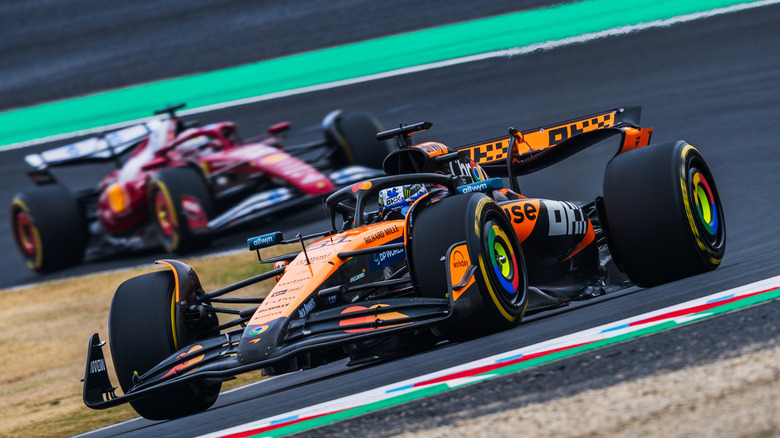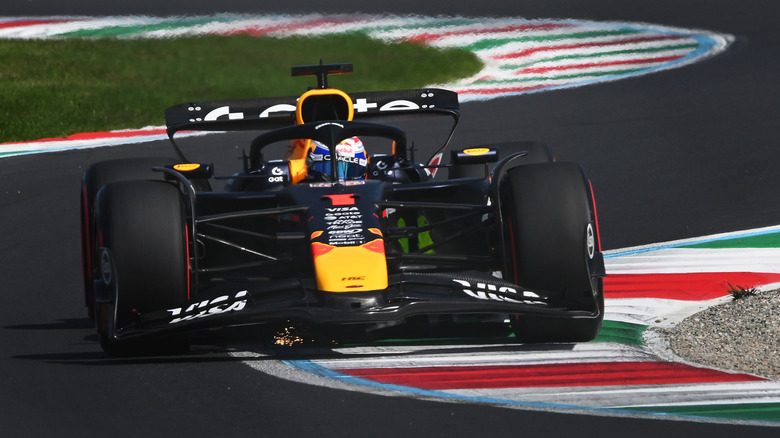How Long Do F1 Engines Last? (And How Much Do They Cost To Replace?)
Even if you're a complete stranger to motorsport, a quick glimpse at the world of F1 reveals that it isn't a cheap endeavor. A field of teams, armed with mechanics, strategists, and PR managers fly back and forth across the world, sending drivers around track at unfathomable speeds for 90 minutes every other weekend or so. All while attracting viewership in the millions each time.
Every single aspect of F1 is expensive, but the cars are in a league of their own when it comes to costs, and that's what makes the crashes oh-so expensive when they do occur. We're talking $200,000 for a front wing, $140,000 for a fuel tank, and in the region of $600,000 for a transmission. While some parts can be used over and over again if well-cared for, some mechanical aspects of an F1 car will wear out over the course of the season. After all, this especially crafted racers undergo huge stresses when being pushed to the limit over the course of a race, and the engine is one of those components that will wear and thus need replacing after a number of races.
Generally speaking, an average F1 engine will last between seven or eight races. So, it stands to reason that, over a season's 24 races, it will need replacing around three times, although the FIA allows four as a maximum (any more incurs penalties). Here's the catch, though: while a transmission might cost $600,000 or so, an F1 engine will set the team back between $11 and $16 million. Ouch.
Here's why F1 engines cost so much and need replacing so frequently
There's no secret as to why F1 engines wear out so quickly. It's not that they are unreliable, in fact, the current crop of 1.6-liter hybrid units are remarkably reliable. The reason is they are very specialized pieces of equipment, and teams must weigh the need for a reliable engine against the desire for more power. Chasing gears with a 15,000 rpm redline is going to wear out any engine pretty quickly, and when you compare it to the fact that funny car engines need to be replaced after just five passes on average, it goes to show that F1 engines are actually pretty durable.
In fact, back in the 2000s, teams would get through way more engines, and prior to that, in the '80s and '90s, teams would be thankful if the engines simply held-on and made it through a single race. So, while it may seem a little overkill to be swapping in three or four engines a season, that's actually a remarkable achievement.
As for why they cost so much, numbers like this take a little time to wrap your head around. The engineering that goes into these engines is simply amazing, and tech like this costs money — plenty of it. The pistons are engineered to such a fine degree, they're actually seized in place until the engine warms up – a gap just wider than a human hair is all that separates the piston from the cylinder wall. That's just one example of how precise the engineering within an F1 engine is, and with constant development going on to further enhance and improve them, it's possible that F1 engines will only ever get more expensive as time progresses.

